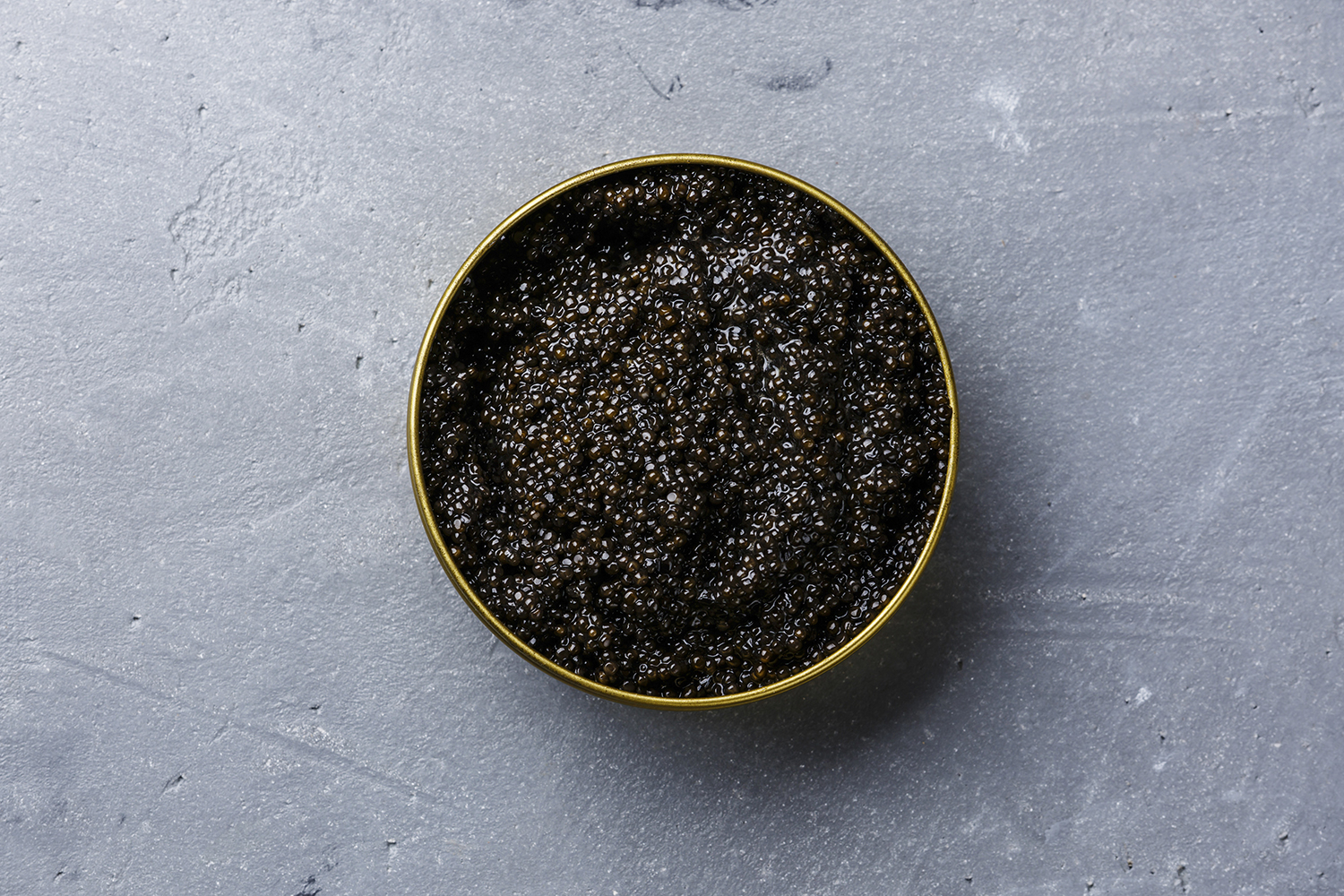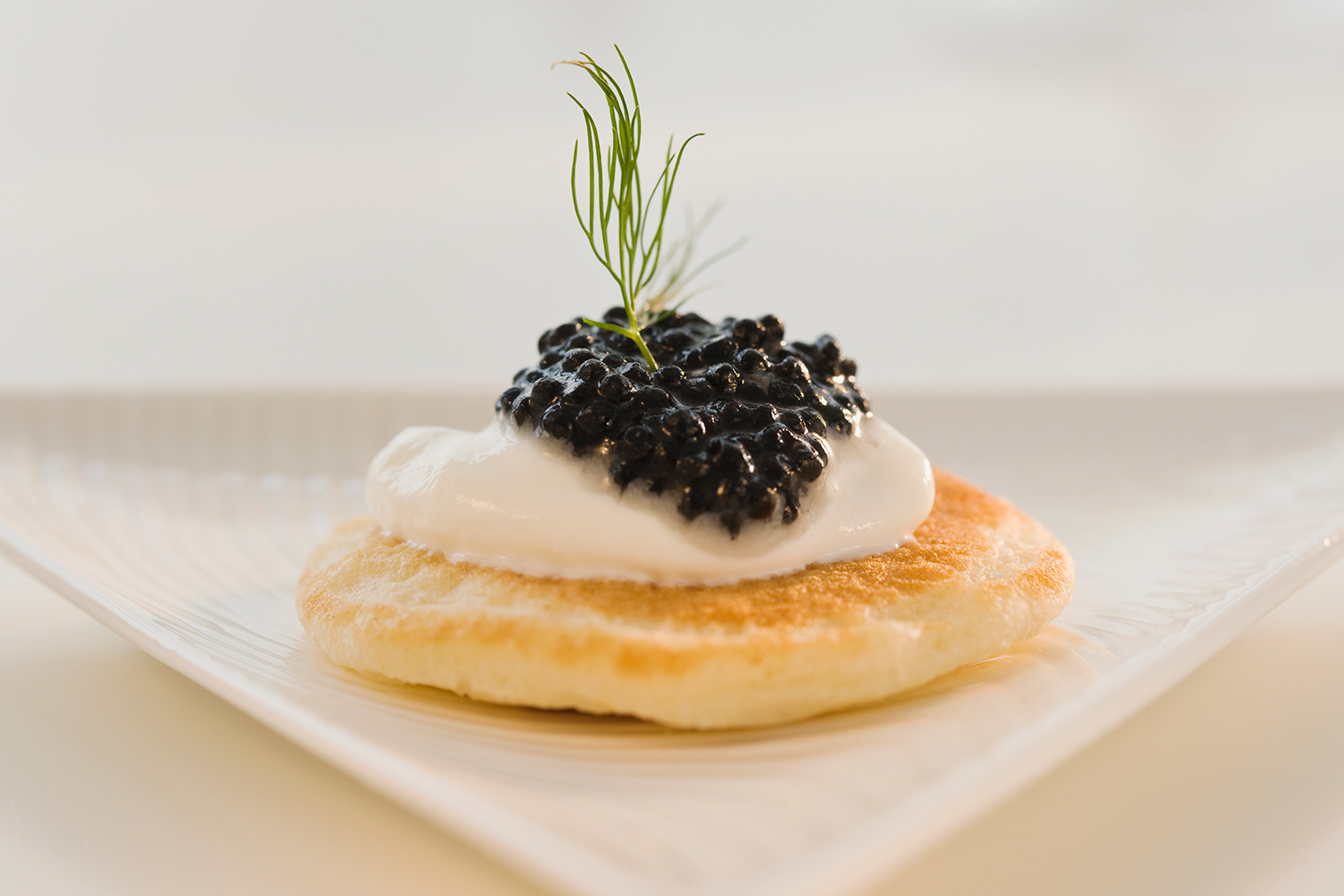An interesting thing happens when times are tough, at least among those who can afford it. Luxury purchases tend to go up, signaling a movement to treat yourself amid all the noise, whether it be the pandemic, war, tanking crypto, or the perils of climate change.
Caviar is a major metaphor for such a thing and is a culinary delicacy that’s enjoying a bit of a renaissance these days. The fish roe is more popular than ever, showing up on more menus and in more creative ways at restaurants all over the country. It joins a shortlist of luxe items — champagne, Cartier, and Prada purchases — that have sold surprisingly well over the last few years, despite a public health crisis that has strained the economy.

Petra Bergstein-Higby is president and cofounder of The Caviar Company. The outfit is based in San Francisco and sells caviar, both via retail and wholesale to restaurants all over. Lately, business has been pretty solid.
“Our retail sales increased exponentially during the early days of the pandemic and continue to be above pre-pandemic levels today,” she says. “At one point early on, we saw an increase of over 300% on the retail and online side. This was of course balanced out by a dip on the wholesale side when restaurants shuttered, but was huge for us to see such a huge jump on what we were already doing from a retail perspective in those early days, when we didn’t know what the future would hold. Since then, we’ve continued to report above pre-pandemic levels on the retail and wholesale side.”
Bergstein-Higby says when people were stuck at home during quarantine, a lot of folks signed up for virtual tastings looking for a fun way to celebrate life moments. In doing so, they were “choosing caviar really for its ability to make a dish or moment feel special and luxurious, not to mention the ease of ordering and creating a new experience without much lift,” she says.
Many people are trying the stuff for the first time. Bergstein-Higby estimates that that’s the case for about half of her customer base. People will wander into the company’s tasting room in Tiburon on a random weekday simply looking to pamper themselves in a new way. “Some of our top-selling products are hackleback caviar and smoked trout roe, both of which we often describe as ‘first-time’ or ‘everyday’ caviars, given how approachable and versatile they are with a multitude of ways to enjoy and a more affordable starting price point,” she says.
The idea of an everyday caviar may seem laughable, but the price points are markedly different. The hackleback starts at around $46 an ounce and the salmon roe at $10 per ounce. That’s a fraction of what the higher-end sturgeon options begin at, but it still allows customers to sample the flavor, ritual, and texture of caviar.
Added approachability

Part of the added approachability is the wider variety of caviar available now, some of which is raised right here in the U.S. “Caviar” no longer applies only to the sturgeon of the Black or Caspian Seas, at least not among the newest culinary generation. Plus, we’re treating it with a little more amusement and invention. Caviar is no longer just the stuff of royalty, eaten by itself alongside ice-cold vodka. The TikTok crowd is embracing “bumps” of the stuff, where a small portion of caviar is enjoyed off the back of your hand.
“In many restaurants today, you won’t often come across a traditional caviar service. Instead, you’ll see something topped with caviar, drinks paired with caviar bumps, or bites incorporating caviar,” says Bergstein-Higby. “While a traditional caviar service will come with a whole ounce of caviar, many of the dishes you’ll come across only use a few spoonfuls, which is much more cost effective for the restaurant and approachable for diners. Not to mention, it has helped to foster a sense of newness and curiosity around the delicacy.”
Caviar has other things going for it too. Because there’s no specific seasonality around it, such as with wine or certain types of produce, it can be accessed year-round. It tends to be more popular around the holidays, but the move now is to market it as a treat for whenever you feel like it. As we look for any excuse to celebrate anything (aren’t those holiday lights going up earlier every year?), caviar is filling a certain void.
“It’s helping to break down the air of exclusivity around caviar and hesitation based on price or inexperience,” continues Bergstein-Higby. “More people are enjoying it because they can indulge without buyer’s remorse, especially with people rediscovering the value of a ‘treat yourself’ moment during the early days of the pandemic.”
Other “the end is near” foods
It’s not just caviar sales that have spiked some lately. Other trends are moving along the luxe end of the culinary sector and driving luxury food splurges. Delivery apps (like Caviar, in fact) are recognizing a real opportunity and working with Michelin Star restaurants. Some diners are both apprehensive about returning to the dine-in ways of old and eager to have an incredible, bucket-list-level meal. In New York, you can now get food from award-winning eateries like Crown Shy and Oxomoco, among others.
What else? Well, just look at the recent popularity of luxury foods like edible gold and vintage brandy. We’re actively looking for ways to celebrate little moments, perhaps because we feel doomed or because we just want the occasional little victory to keep the whole ship afloat. Whatever the reason, people are going luxe way more than you’d expect in an economy threatened with recession.
If the end is in fact near, well, at least we have caviar and some other luxury items to send us off in style. And because a lot of these items are becoming at least a bit more approachable and accessible, they’re opening the door for more of us to pretend we’re wealthy, at least a few times a year.


